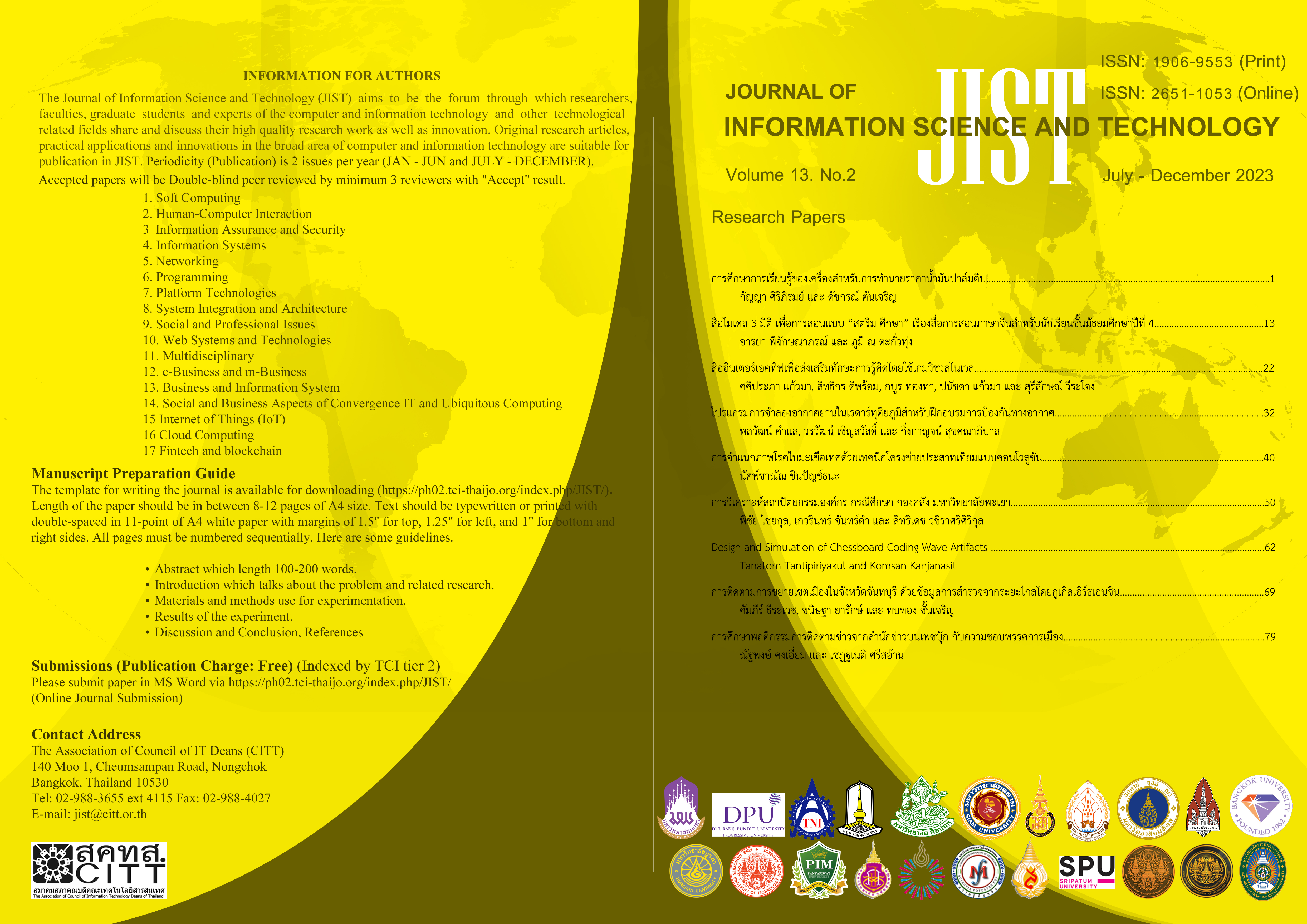The Enterprise Architecture Analysis: A Case Study of The Division of Finance, University of Phayao
Main Article Content
Abstract
Division of finance, University of Phayao is an agency that provides the financial and fiscal supports by establishing the financial and accounting policies, as well as, preparing a database and the financial reports of the university so that the management is efficient and also it responds to the change in the future. The purpose of this research is to analyze and determine the planning and operation frameworks according to the organizational architecture framework of the division of finance, University of Phayao. By using the TOGAF architecture framework, it can divide the analysis into 4 parts and also it can design an enterprise blueprint in order to see the overall picture of the organization and also it can manage systematically. In addition, it can be used in the supporting and decision-making of executives and also it can be utilized for assessing the satisfaction of the division of finance, University of Phayao. Here, the studied target groups consisted of the accounting finance and supplies network groups in University of Phayao, are 41 people. In satisfaction assessment, for the statistic used in the analysis, it is the mean and the standard deviation. For the evaluation results, it is found that the overall satisfaction is in a high level that the mean value is 4.22 and the standard deviation value is 0.77.
Article Details
This work is licensed under a Creative Commons Attribution-NonCommercial-NoDerivatives 4.0 International License.
I/we certify that I/we have participated sufficiently in the intellectual content, conception and design of this work or the analysis and interpretation of the data (when applicable), as well as the writing of the manuscript, to take public responsibility for it and have agreed to have my/our name listed as a contributor. I/we believe the manuscript represents valid work. Neither this manuscript nor one with substantially similar content under my/our authorship has been published or is being considered for publication elsewhere, except as described in the covering letter. I/we certify that all the data collected during the study is presented in this manuscript and no data from the study has been or will be published separately. I/we attest that, if requested by the editors, I/we will provide the data/information or will cooperate fully in obtaining and providing the data/information on which the manuscript is based, for examination by the editors or their assignees. Financial interests, direct or indirect, that exist or may be perceived to exist for individual contributors in connection with the content of this paper have been disclosed in the cover letter. Sources of outside support of the project are named in the cover letter.
I/We hereby transfer(s), assign(s), or otherwise convey(s) all copyright ownership, including any and all rights incidental thereto, exclusively to the Journal, in the event that such work is published by the Journal. The Journal shall own the work, including 1) copyright; 2) the right to grant permission to republish the article in whole or in part, with or without fee; 3) the right to produce preprints or reprints and translate into languages other than English for sale or free distribution; and 4) the right to republish the work in a collection of articles in any other mechanical or electronic format.
We give the rights to the corresponding author to make necessary changes as per the request of the journal, do the rest of the correspondence on our behalf and he/she will act as the guarantor for the manuscript on our behalf.
All persons who have made substantial contributions to the work reported in the manuscript, but who are not contributors, are named in the Acknowledgment and have given me/us their written permission to be named. If I/we do not include an Acknowledgment that means I/we have not received substantial contributions from non-contributors and no contributor has been omitted.
References
Division of Finance, University of Phayao, “Development Strategic Plan of Division of Finance Fiscal Year 2566 – 2570,” https://finance.up.ac.th, 2022. [Online]. Available: https://finance.up.ac.th/V2/F/Strategic2566-2570.pdf. [Accessed Feb. 5, 2023].
A. Goel, H. Schmidt, and D. Gilbert, “Towards formalizing virtual enterprise architecture,” in 2009 13th Enterprise Distributed Object Computing Conference Workshops, Auckland, New Zealand, 2009: IEEE, pp. 238-242.
ISO/IEC/(IEEE), “ISO/IEC 42010 (IEEE Std) 1471-2000 : Systems and Software engineering - Recomended practice for architectural description of software-intensive systems,” p. 23, 07 2007.
D. Draheim and G. Weber, Trends in Enterprise Application Architecture: 2nd International Conference, TEAA 2006, Berlin, Germany, November 29-December 1, 2006, Revised Selected Papers. Springer, 2007.
The Open Group. Core Concept of TOGAF, 2022. [Online].https://pubs.opengroup.org/architecture/togaf9-doc/arch/ [Accessed Feb. 5, 2023].
H. Weihrich, “The TOWS matrix-A tool for situational analysis,” Long Range Planning, vol. 15, no. 2. Elsevier BV, pp. 54–66, Apr. 1982.
D. Dewanto, “TOWS matrix as business strategy of BP. Tapera,” International Journal of Research in Business and Social Science (2147- 4478), vol. 11, no. 7, pp. 62–77, Nov. 2022.
“e-Services in Division of Finance, University of Phayao,” https://finance.up.ac.th, 2023. [Online]. Available: https://finance.up.ac.th/V2/#eservices. [Accessed Feb. 5, 2023].
E. E. Watson and H. Schneider, “Using ERP Systems in Education,” Communications of the Association for Information Systems, vol. 1, 1999.
T. Unnop. and N. Smitti. “A Novel Design Buddhist Education Enterprise Architecture” Saeng Isan, Vol.16, (2), pp. 203-222, 2019.
C. Saowanee. and T. Sotarat. “The design and evaluation of business and information architectureblueprintfor the oil and gas businesslicensing.” Science and Technology , Vol.4, (3), pp. 138-156, May -June, 2017.



